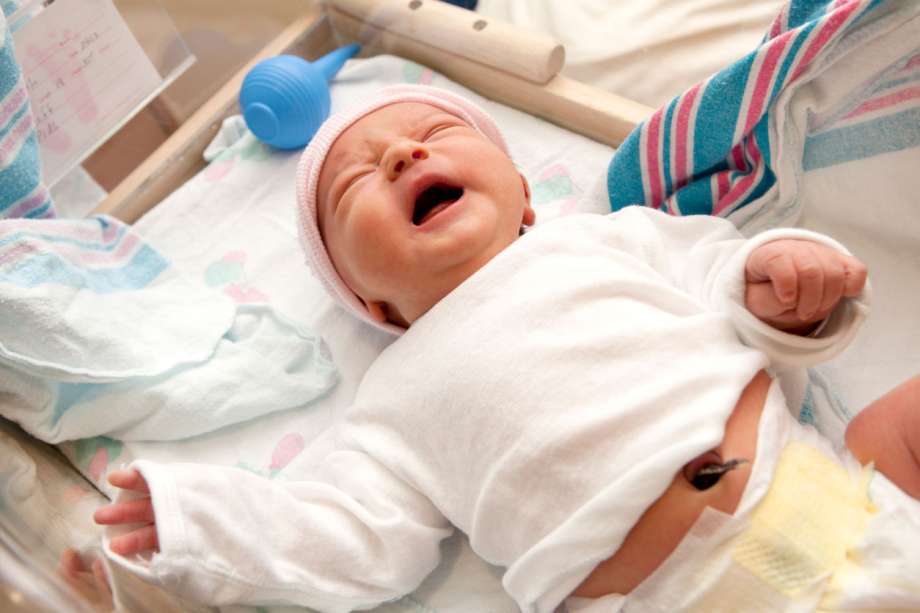The Benefits of Delayed Cord Clamping After Birth

Pregnancy can be one of the most exciting times in a woman’s life, and preparing for the actual labor and delivery can practically feel like a full-time job. There are so many choices to consider. Natural or medicated delivery? Midwife or doctor? Birthing center or hospital? The list goes on and on. One particular birthing decision that has become a fairly popular one in recent years concerns whether or not to delay cord clamping after birth.
More: The Role of the Umbilical Cord
More and more moms are educating themselves on cord clamping to make the decision that is best for their personal situations, and the medical community has also stepped up to share their opinions. As of 2014, the World Health Organization (WHO) now recommends that the umbilical cord should not be clamped earlier than necessary. They specifically recommend that the cord clamping be delayed at least one to three minutes. Many women choose to delay cord clamping until the cord actually stops pulsing though.
What exactly is cord clamping?
Cord clamping is the process of stopping the blood flow from the placenta to the baby after the baby is born. This is followed by using a scissor to sever the umbilical cord that connects mama and baby. Cord clamping used to typically be something that happened within the first 15-30 seconds after a baby was born. Either the medical practitioner attending the birth or the father would be the one to cut it. This would happen quickly whether the baby was born via a vaginal delivery or C-section. The small place on the baby’s tummy that retains the stump of the severed umbilical cord is where you will soon see your precious baby’s belly button.
Maternity Concierge and Doula HeHe Stewart says, "99% of my clients request delayed cord clamping for reasons of the benefits such as increased iron transfer to baby, gentler delivery of placenta (By leaving baby and placenta connected, you are allowing the two to "talk" to one another. By cutting the cord, you are disrupting a communication line intentionally set up by nature to signal your body that the placenta is safe to detach and be delivered.), decreased risk for respiratory problems/increased oxygen transport, and decreased risk for blood transfusion. The World Health Organization has taken a stance in support of delay cord clamping because of the benefits.
What makes the timing of clamping the cord so important?
The cord and placenta system contain about one third of the baby’s blood after she is born. During the time that you were pregnant, the umbilical cord was literally the lifeline between your body and your baby. As long as the umbilical cord is attached to your baby and is still intact with the placenta inside your body, then it continues to do its job as a lifeline receiving nutrients and oxygen-rich blood from your body and getting rid of the carbon dioxide and waste from the baby’s body. Every extra second that cord clamping is delayed allows the baby to continue to receive the nutrient and oxygen dense blood from your body.
What does the research say about delaying cord clamping?
The research on cord clamping is overwhelmingly in favor of delaying it. According to What to Expect:
“In 2013, a large review of these studies found that infants whose cord had been cut more than a minute after birth had higher levels of hemoglobin and iron in their blood — both molecules that are needed in those first days and weeks of life to help a baby thrive. Even six months later, babies in the later-cord-cutting group had a lower risk of iron deficiency. Other studies have found that newborns have less inflammation in their body when cord cutting is delayed, possibly because of stem cells that flow into babies’ body along with the blood. And a 2015 study found that children — especially boys — whose cord was cut later had better motor and social skills even at 4 years old.”
Overall, research shows that delayed cord clamping is beneficial to both the mother and the baby. The baby receives a full count of red blood cells, stem cells, and immune cells and is at a lower risk for iron deficiency anemia. She also receives a normal and healthy blood volume. The mother benefits from delayed cord clamping because it can help to prevent complications with delivering the placenta.
When is delayed cord clamping not advised?
Delayed cord clamping is not advised when a baby is born in respiratory distress; though babies who received delayed cord clamping are no more at risk to experience respiratory distress than those who received immediate cord clamping.
Also, if you plan to donate your baby’s cord blood, it is not advisable to delay cord clamping. If you plan to privately bank the cord blood for your own family’s potential use later on, then you can still choose delayed cord clamping if you would like.
Stewart recomends, "Anytime there is an emergency that is life threatening to mom or baby would be an instance that DCC is not an option any longer. However, rest assured that your baby will replenish the blood that they would have gotten from delayed cord clamping, no problem. Many people worry about increasing the risk of hemorrhaging with delayed cord clamping and this is simply just not true. Matter of fact, in my own practice, I find that when providers put "traction" on the placenta and "encourage" the placenta to emerge, it can lead to a greater risk of hemorrhaging rather than simply allowing your baby, your body, and your placenta to do what it knows how to do."
What if I want to do immediate skin to skin contact with my baby or try to breastfeed right away?
Good news! In an uncomplicated birth, there should be no reason why your baby could not be laid immediately upon your chest. The umbilical cord is long enough to reach, and you can begin interacting with your baby as you please while the umbilical cord continues to pulse.
I’ve made my decision! How do I put my cord clamping plans in place?
Once you’ve made your decision regarding cord clamping, you should add it to your birth plan. You should also share any birth plan related decisions with your partner, your medical practitioners, and any additional support people you may have with you at the birth like a doula. You can never be too prepared, so you can provide hard copies of your birth plan to all and also ask your medical practitioner to scan the plan into your medical records so everyone who might come in contact with you from the hospital or birthing center would have access to it. Keeping an electronic copy on your support team’s phone is helpful as well.
You will also need to decide if you would like to bank the cord blood for your private family use or donate it to a cord blood bank. Of course, you could simply do nothing with the cord blood, too. Private cord blood banking does come with a cost, so be sure to research your options and make plans for this in advance. If you decide to donate the cord blood to a public cord bank, you will also need to decide and make arrangements prior to giving birth. This is a fairly simple decision that costs nothing and allows your baby to potentially save a life. More than 25,000 have received cord blood transplants around the world.
Ultimately, pregnancy is an ideal time to educate yourself about all of your labor and delivery options. Feeling empowered by that education will allow you to have as much peace of mind as possible going into one of the most life-changing experiences of your life. Knowledge is power, so do your research, make your plans, and then do your best to sit back and relax. Once your baby is born, you will not be critiquing your birth plan decisions no matter what as you’ll be too busy falling in love with a very special little person.
Once the baby is born, do you know what to expect immediately after? Follow FamilyEducation on Pinterest for more pregnancy and birth tips and wisdom:

